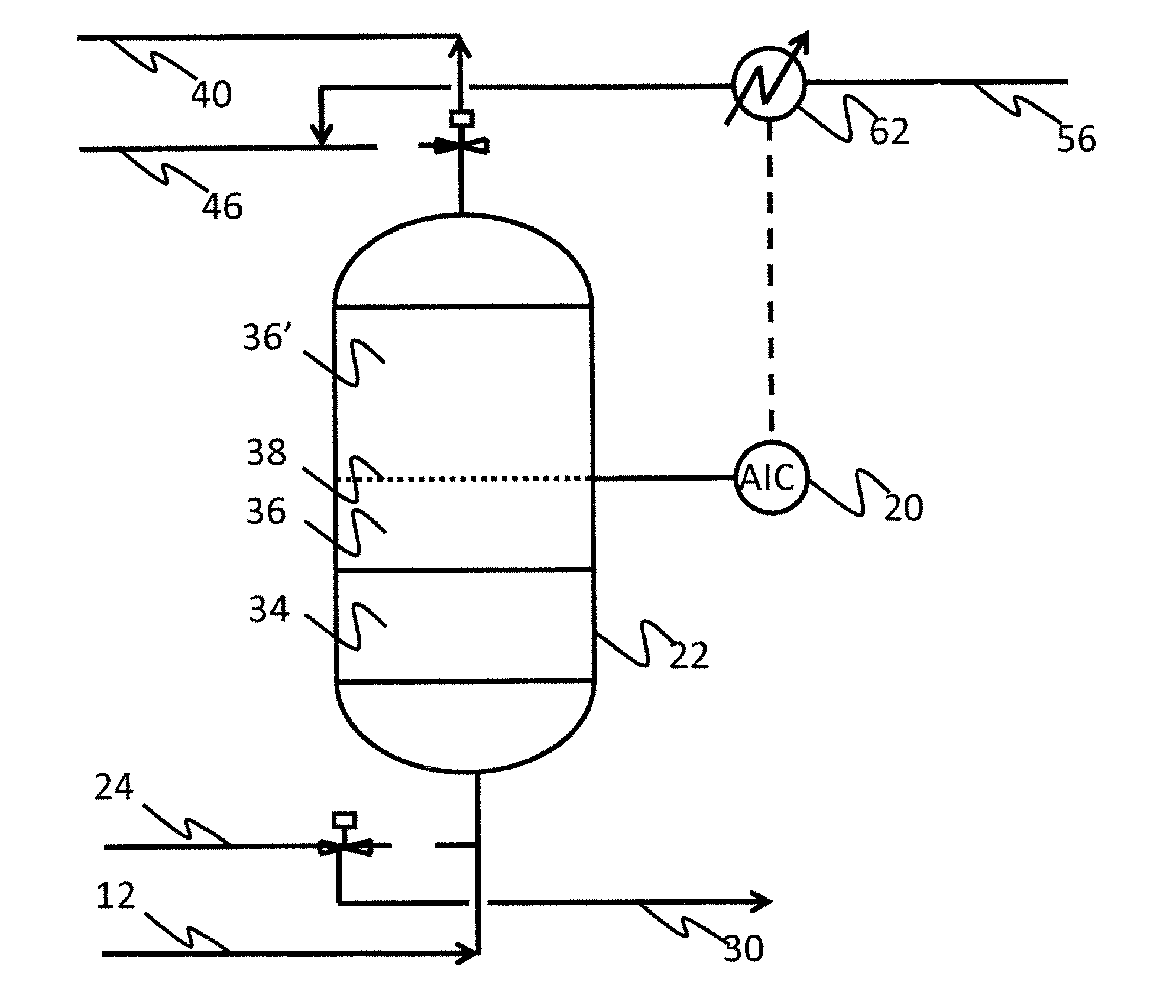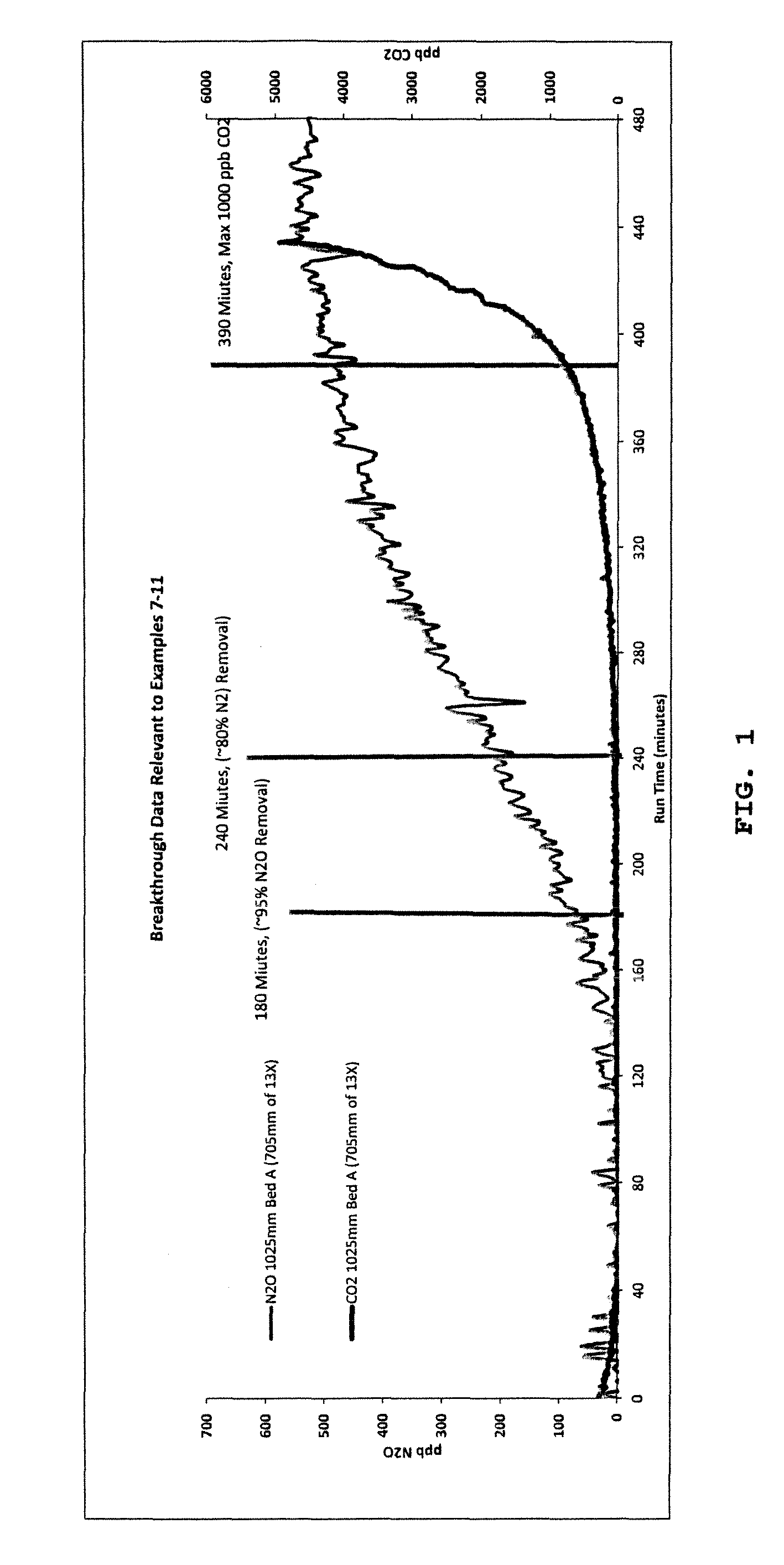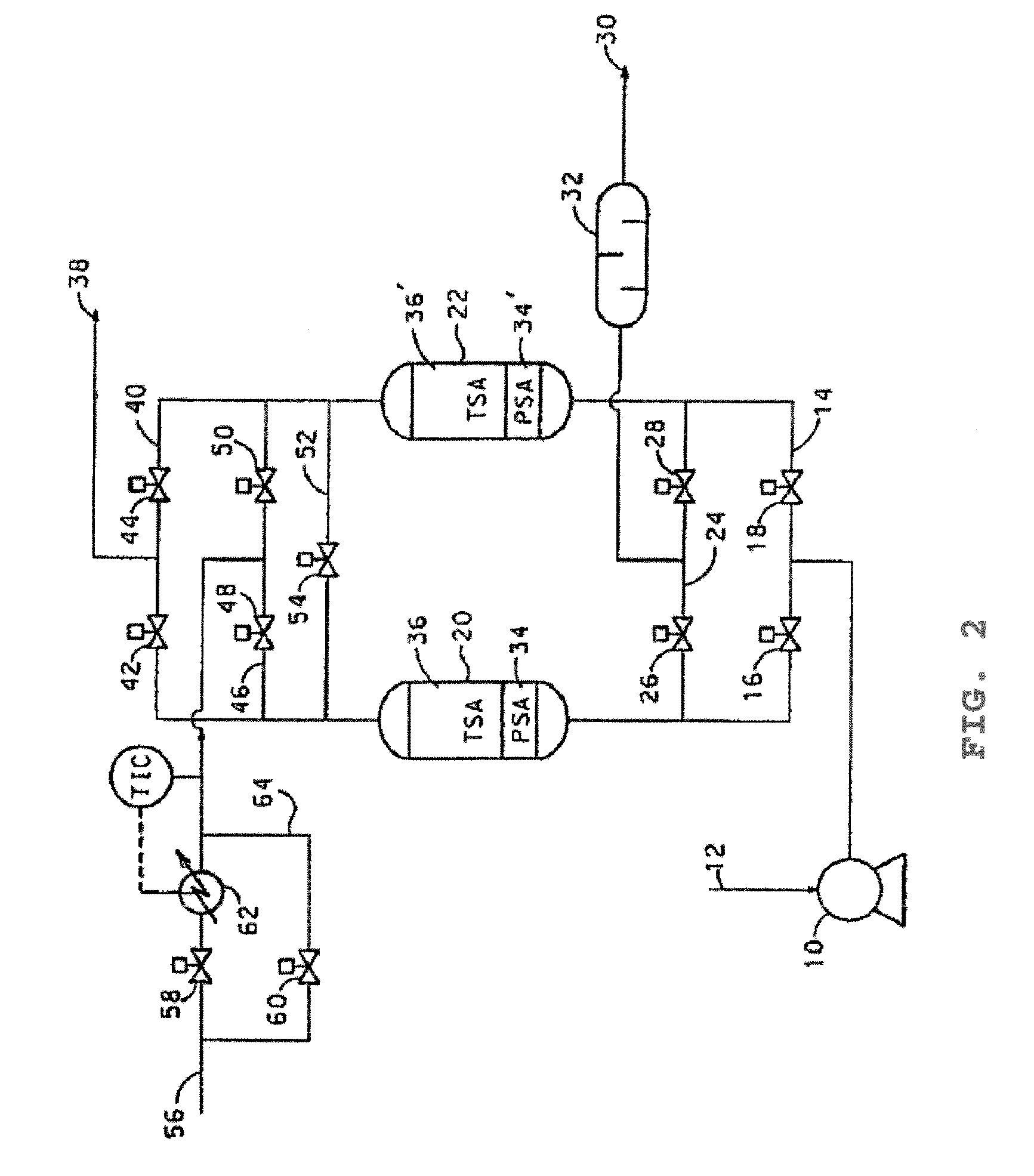Purification of air
a technology of air purification and air, applied in the field of air purification, can solve the problems of inability to accurately determine the online time, inability to achieve precise results, and inability to determine the online time based on a cosub>2 /sub>exit concentration
- Summary
- Abstract
- Description
- Claims
- Application Information
AI Technical Summary
Benefits of technology
Problems solved by technology
Method used
Image
Examples
example 1
Establishing Cycle Conditions
[0101]This example is an initial study conducted to determine whether conditions and apparatus suitable for conducting TPSA can be adapted for N2O removal. Cyclic, dynamic carbon dioxide and nitrous oxide breakthrough curves were measured on a two-layer bed. The first layer on the feed side is K2CO3 AA330 activated alumina (37% by volume) and the second layer on the product side is binderless Heng Ye Na exchanged LSX (63% by volume). The bed was fed water-saturated air at 20° C. (68° F.) and 6 bara (290 psia) and with a typical feed concentration of 400 ppmv CO2 and 350 ppbv N2O. The gas flux was 4,924 kg / m2 hr. The data was obtained on a 203 mm (8 in) diameter by 2740 mm (9 ft) tall column. The analyser was placed 41% of the way along the length of the LSX zeolite. Under these conditions, no carbon dioxide was detected by the analyser during the online time. The conditions used, and the results in terms of removal of CO2 and N2O were as follows:
[0102]
TA...
example 2
Variation of Cycle Conditions
[0104]Example 1 was repeated using a cycle time of 130 min and a hot purge time of 25 min (ratio of hot purge time to online time 0.19), and more than 95% of the N2O was removed.
[0105]In this invention, the process is not run to CO2 breakthrough, and thus allows a greater proportion of the CO2 to be adsorbed on the first adsorbent (40% compared with around 10% in a standard TSA process). This reduces the amount of CO2 to be taken out by the molecular sieve and therefore improves the extent of removal of N2O on the molecular sieve.
example 3
Effect of Zeolite Type
[0106]13X zeolite material was tested in the same conditions as Example 1, except that the feed temperature was reduced to 18.5° C., and the proportions of the adsorbent were 31.7% alumina and 68.3% 13X zeolite by volume. The N2O removal level obtained was 98%.
[0107]Little difference is seen between 13X and LSX zeolites in terms of N2O removal, although in U.S. Pat. No. 7,935,177 it is taught that Na exchanged LSX gives better performance for both CO2 and N2O removal as shown in Table 6:
[0108]
TABLE 6CO2 relativeN2O relativedynamicHenry's LawZeoliteadsorptivityconstant for adsorption13X with 15% binder1.001.00NaLSX with 15% binder2.301.31
[0109]It was assumed that, given the high adsorption capacity of NaLSX for CO2, only a small section of the NaLSX layer would have been used for CO2 adsorption, especially as CO2 removal with alumina as the first adsorbent is high. However, only a fraction of the NaLSX is located within the equilibrium zone in such short cycle c...
PUM
| Property | Measurement | Unit |
|---|---|---|
| Henry's Law constant | aaaaa | aaaaa |
| temperature | aaaaa | aaaaa |
| time period | aaaaa | aaaaa |
Abstract
Description
Claims
Application Information
 Login to View More
Login to View More - R&D
- Intellectual Property
- Life Sciences
- Materials
- Tech Scout
- Unparalleled Data Quality
- Higher Quality Content
- 60% Fewer Hallucinations
Browse by: Latest US Patents, China's latest patents, Technical Efficacy Thesaurus, Application Domain, Technology Topic, Popular Technical Reports.
© 2025 PatSnap. All rights reserved.Legal|Privacy policy|Modern Slavery Act Transparency Statement|Sitemap|About US| Contact US: help@patsnap.com



